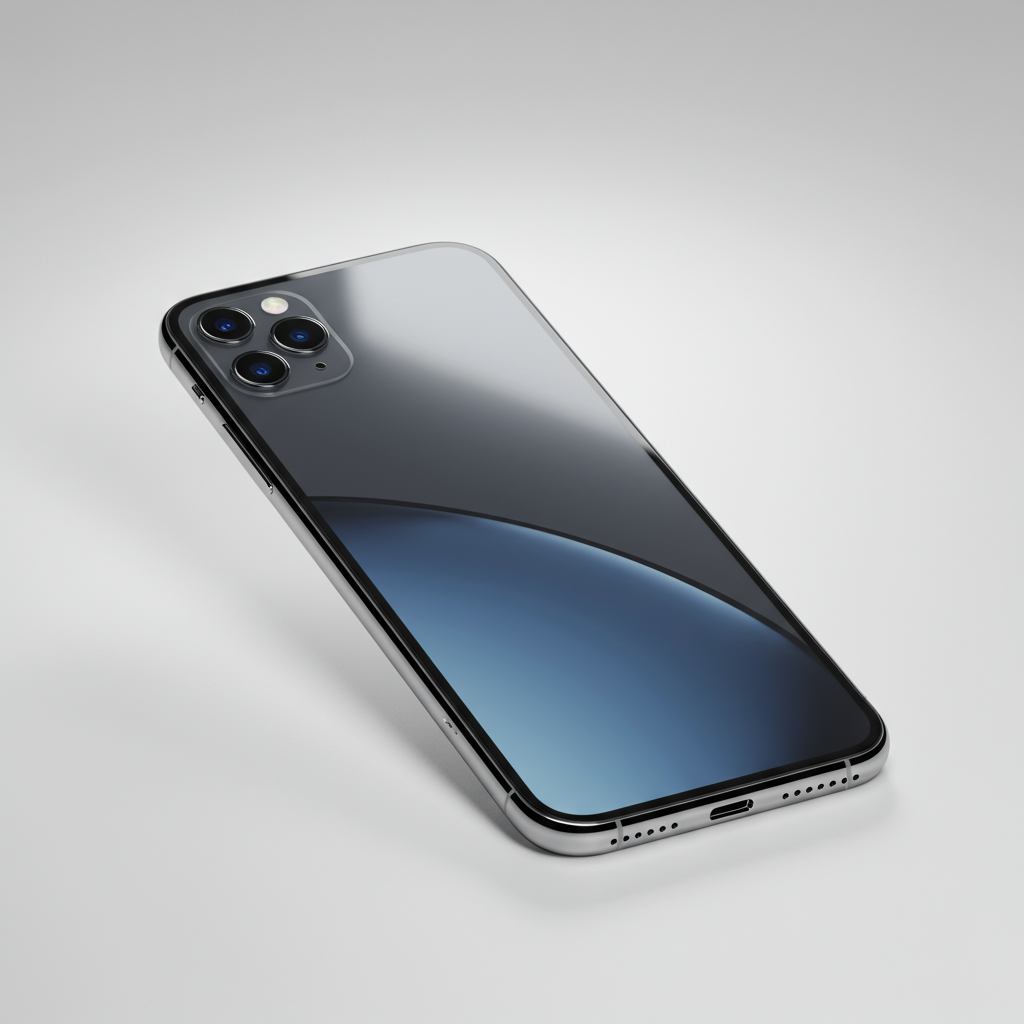Anticipation is building for Apple’s next smartphone refresh. While the current generation has settled in, eyes are already on the horizon for the iphone 17 series, widely expected to debut in September 2025. Recent leaks and analyst reports are painting a picture of significant design and display enhancements, particularly for the standard iPhone 17 model and a potential new “Air” variant. These rumored changes could address some long-standing user requests and signal an evolution in Apple’s hardware strategy, offering compelling reasons for an upgrade.
Based on insights from reputable leakers and industry analysts, the iPhone 17 lineup appears poised to deliver a notable visual and functional facelift. Key areas receiving attention include a larger screen size for the base model, a significant upgrade to the front-facing camera, potential shifts in component placement, and a sleeker overall aesthetic with thinner bezels. Synthesizing these reports provides an early glimpse into what users might expect from the 2025 iPhones.
The Standard iPhone 17: Bigger Display, Sharper Camera
One of the most consistent rumors surrounding the standard iPhone 17 focuses squarely on its display. For years, the base model has lagged behind its Pro siblings in screen size, maintaining a 6.1-inch panel while the Pro models have offered larger options. This appears set to change dramatically with the iPhone 17.
Screen Size Leap: 6.1″ to 6.3″
Multiple sources, including reports citing leaker Digital Chat Station and analyst Ross Young, suggest the display on the regular iPhone 17 will increase to 6.3 inches. This brings it in line with the current size of the iPhone 16 Pro (or likely the iPhone 17 Pro size), standardizing the display diagonal across at least two models in the lineup. This modest increase in screen real estate could offer a more immersive viewing and interaction experience without drastically altering the phone’s overall footprint, though it does mean your current iPhone 16 case likely won’t fit due to subtle dimensional differences.
Refresh Rate Rumors: 120Hz but Likely Not ProMotion
The enlarged display sparked initial hope that the standard iPhone 17 might finally inherit Apple’s ProMotion technology. ProMotion offers a dynamic refresh rate, scaling up to 120Hz for smooth scrolling and gaming while dropping lower to save battery life when static. However, more recent leaks suggest that while the refresh rate will improve from the current 60Hz, it will likely transition to a fixed 120Hz panel rather than adopting the dynamic ProMotion feature. ProMotion is expected to remain a differentiator for the higher-tier Pro models. Although a fixed 120Hz is a welcome improvement over 60Hz, the absence of dynamic refresh rate might be a point of disappointment for some users hoping for parity with Android flagships.
Front Camera Boost: Doubling Resolution
Beyond the display itself, the front of the iPhone 17 is expected to receive a significant camera upgrade. Rumors indicate the front-facing selfie camera will jump from 12 megapixels to a much sharper 24 megapixels. This would be a substantial improvement, leading to more detailed photos and potentially better video quality for calls and content creation. It’s a much-needed resolution bump that could enhance the user experience for anyone who relies heavily on the front camera.
Introducing the Potential iPhone 17 Air: A Slim Design Twist
Adding a new dimension to the lineup, reports continue to swirl about a super-slim model, tentatively nicknamed the iPhone 17 Air. This potential new entrant isn’t just about thinness; leaks suggest it could feature a unique design element setting it apart from the rest of the range.
A New Form Factor and Unique Camera Placement
According to leaker Majin Bu, the rumored iPhone 17 Air will have a distinct layout for its front-facing camera and Face ID sensors. While the current iPhone 16 series and the expected iPhone 17, 17 Pro, and 17 Pro Max models are said to keep the camera on the right edge of the Dynamic Island cutout, the iPhone 17 Air is rumored to move it to the left edge. This unusual placement is reportedly driven by the phone’s significantly slimmer profile, necessitating a rearrangement of internal components, including the Face ID module.
The Logic Behind the Left-Sided Camera
Majin Bu speculates this repositioning isn’t just a design constraint for the Air model but a strategic move that could pave the way for a more compact Dynamic Island or even a smaller notch in future iPhones. By placing the camera on the left, Apple might be experimenting with layouts that allow the remaining Face ID components to occupy less horizontal space. While the exact strategic thinking isn’t fully clear, evidence supporting this layout shift has reportedly appeared in leaked screen protector images showing a left-sided cutout for one of the new models. This suggests Apple is at least prototyping or planning for this distinct design on the rumored slim variant.
The Display Aesthetic: Ultra-Thin Bezels Across the Board?
Leaks aren’t just pointing to screen sizes and camera positions; the frames surrounding the displays are also a topic of speculation. The possibility of uniformly thin bezels across the entire iPhone 17 range is gaining traction.
Border Reduction Technology Explained
Reports suggest Apple might employ advanced manufacturing techniques, possibly utilizing Border Reduction Structure (BRS) technology, to shrink the bezels around the display significantly. This technology allows the display circuitry to be more tightly packed or folded, reducing the visible border around the screen edge. Adopting this across the lineup would give even the base iPhone 17 a more premium and modern look, maximizing the screen-to-body ratio.
Impact on Overall Design
If the standard iPhone 17 adopts the 6.3-inch size (matching the Pro), it’s logical that its bezels might also become identical to the Pro model. Combined with the expected slim design of the iPhone 17 Air, it seems plausible that Apple would aim for a consistent, ultra-thin bezel appearance across all models. This would enhance the immersive quality of the displays and provide a sleek, unified aesthetic for the entire 2025 iPhone family.
Beyond the Front: Other Potential iPhone 17 Upgrades
While the display and front design seem to be key focuses, other iterative improvements are also anticipated for the iPhone 17 series. Performance upgrades, battery enhancements, and connectivity improvements are standard evolutions year over year.
A19 Chip and Performance Notes
The iPhone 17 is expected to feature Apple’s next-generation A19 chip, likely built on an improved 3nm process. This should bring efficiency gains and enhanced processing power, particularly beneficial for demanding applications, gaming, and the expanding suite of Apple Intelligence features. Some reports even suggest the possibility of increased RAM, potentially 12GB, to support more complex on-device AI processing.
Battery Enhancements
A slightly larger battery capacity is anticipated for the standard iPhone 17, potentially using a new stacked battery design. Stacked batteries can offer better energy density and thermal performance, allowing the phone to maintain power under heavier loads and potentially offering slightly improved overall endurance compared to the iPhone 16.
Wi-Fi 7 Integration
Connectivity is also set to advance with rumors pointing to the integration of Apple’s proprietary Wi-Fi 7 chip across the iPhone 17 range. Wi-Fi 7 promises faster speeds, lower latency, and improved network reliability in compatible environments.
iOS 26 Context
These hardware changes will, of course, be powered by iOS 26, Apple’s next major software release. iOS 26 is rumored to bring significant design overhauls (“Liquid Glass”) and enhancements to core apps like Camera and Photos, alongside communication features. Notably, some anticipated AI features, including a revamped Siri, are expected to roll out gradually, potentially extending into 2026.
What These Leaks Mean for Potential Buyers
These early iPhone 17 leaks suggest a more substantial upgrade cycle than perhaps seen in the immediate preceding generations, particularly for the base model. The larger screen and potential 120Hz refresh rate alone are significant quality-of-life improvements.
Case Compatibility
As mentioned, the expected increase in physical dimensions for the standard iPhone 17 means that current iPhone 16 cases will almost certainly not fit. Buyers looking to upgrade will need to invest in new protective accessories.
Is it a Worthwhile Upgrade?
For users holding onto older iPhones (pre-15 or even 16) or those who prioritize display size and refresh rate, the iPhone 17 appears poised to offer a more compelling set of upgrades. The enhanced front camera is also a welcome addition. However, those primarily interested in the latest AI features might need to consider the software rollout timeline, as some major capabilities powered by the A19 chip may arrive gradually after launch. The potential introduction of a super-slim iPhone 17 Air also adds an intriguing new option to the mix.
Frequently Asked Questions
What are the biggest display changes expected for the standard iPhone 17?
Reports suggest the standard iPhone 17 will feature a larger 6.3-inch OLED display, increasing from the iPhone 16’s 6.1 inches, matching the size of the Pro models. Additionally, the refresh rate is expected to be upgraded from 60Hz to a fixed 120Hz, although it is unlikely to include the dynamic ProMotion technology which is expected to remain exclusive to the Pro lineup.
Why might the front camera be moved on the rumored iPhone 17 Air?
According to leaks, the front-facing camera on the potential super-slim iPhone 17 Air might be positioned on the left edge of the Dynamic Island, unlike other iPhone 17 models where it’s expected to remain on the right. This unique placement is reportedly necessary to accommodate the Face ID module within the constraints of the iPhone 17 Air’s thinner design and could potentially inform future Dynamic Island designs.
Will iPhone 16 cases fit the new iPhone 17 models?
No, due to the expected increase in the standard iPhone 17’s display size from 6.1 inches to 6.3 inches, the physical dimensions of the phone will likely change slightly. This means that cases designed specifically for the iPhone 16 will probably not be compatible with the new iPhone 17 models, requiring users to purchase new cases.
These early leaks provide an exciting look into Apple’s potential plans for the iPhone 17 series. The rumored focus on display size and quality for the standard model, the innovative design approach for the potential iPhone 17 Air, and the possibility of thinner bezels across the range suggest a significant hardware evolution. While these are still rumors and subject to change, they align with Apple’s pattern of incremental yet impactful design refinements and signal a future where the base iPhone offers increasingly premium features. As September 2025 approaches, more details are likely to emerge, solidifying the picture of Apple’s next-generation smartphone lineup.
Word Count Check: 1112




